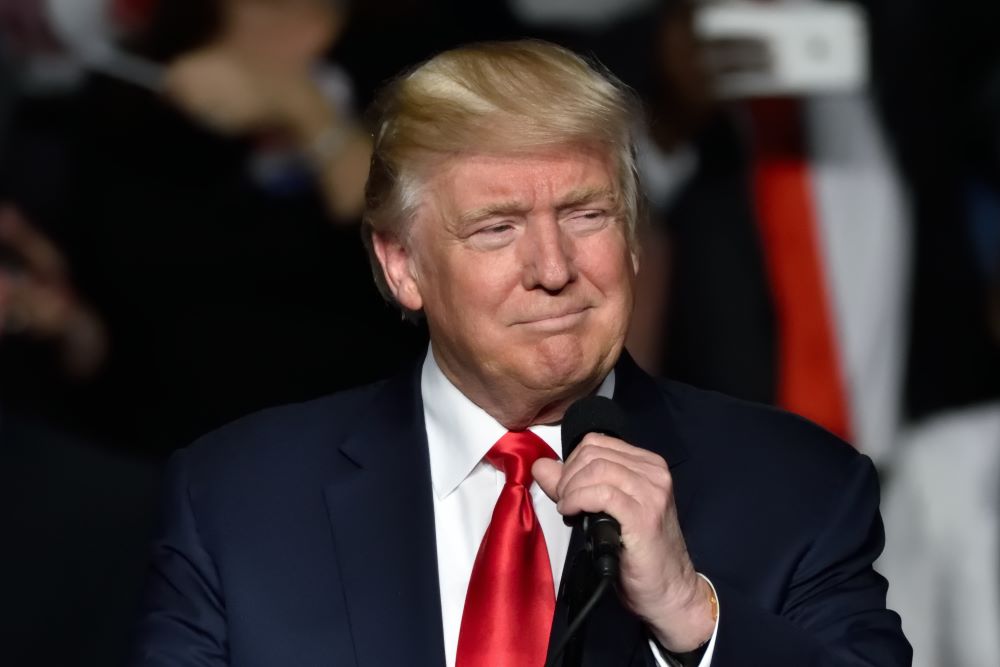In a significant shift from his usual rhetoric, former President Donald Trump has rewritten his speech for the Republican National Convention to emphasize national unity.
This move marks a departure from his typical focus on political opponents, particularly Joe Biden, and aims to address the deep divisions within the country.
Key Points from the Speech
1. Emphasis on Unity:
Trump’s revised speech focuses on bringing Americans together, regardless of political affiliation. He acknowledges the challenges the nation faces and calls for a collective effort to overcome them. This theme of unity is a stark contrast to the often polarizing language he has used in the past. The slogan “Make America One Again” was prominently featured, signaling a clear shift towards inclusivity and cohesion.
2. Avoiding Partisan Attacks:
Notably, the speech avoids direct attacks on Joe Biden and other political rivals. Instead, Trump concentrates on shared values and common goals, seeking to appeal to a broader audience beyond his core supporters. This approach is seen as a strategic move to attract moderate voters and those disillusioned with the current state of political discourse.
3. Addressing National
Challenges:
The speech outlines several key issues that require a unified approach, including the COVID-19 pandemic, economic recovery, and social justice. Trump emphasizes the importance of working together to find solutions and move the country forward. He highlights the need for bipartisan cooperation to tackle these pressing issues effectively.
4. A Call for Patriotism:
Trump invokes a sense of patriotism and national pride, urging Americans to come together in the spirit of the country’s founding principles. He highlights the importance of unity in preserving the nation’s legacy and ensuring a prosperous future for all citizens. This patriotic appeal is designed to resonate with a wide range of voters, emphasizing common ground over political differences.
Reactions and Implications
1. Political Analysts’ Views:
Political analysts have noted that this shift in tone could be a strategic move to appeal to undecided voters and those disillusioned with the current state of political discourse. By focusing on unity, Trump may be attempting to broaden his appeal and present himself as a unifying figure. However, some remain skeptical, pointing to past instances where Trump reverted to divisive rhetoric despite similar attempts at moderation.
2. Public Reception:
The public’s reaction to the speech has been mixed. Some supporters appreciate the call for unity and see it as a necessary step towards healing the nation’s divisions. Critics, however, remain skeptical, questioning the sincerity of the message given Trump’s history of divisive rhetoric. The recent assassination attempt on Trump has also generated a surge of sympathy and support, potentially influencing public perception of his call for unity.
3. Impact on the Republican Party:
Within the Republican Party, the speech has sparked discussions about the future direction of the party. Some members view it as a positive shift towards a more inclusive and less combative approach, while others worry it may alienate the party’s base. The presence of controversial figures and recurring themes of immigration and security at the convention underscore the underlying tensions within the party
Context and Background
1. Assassination Attempt:
The context of the speech is crucial, as it comes just days after Trump narrowly survived an assassination attempt at a campaign rally in Pennsylvania. This incident has added a layer of gravity to his message, with Trump himself acknowledging that the attack changed his thinking about what he would say. The speech is seen as an attempt to project resilience and a renewed commitment to national unity following the traumatic event.
2. Convention Atmosphere:
The Republican National Convention has been marked by themes of law and order, strong anti-immigrant sentiments, and a focus on Trump’s resilience. The convention’s final day, where Trump delivered his speech, featured prominent speakers such as Franklin Graham, Eric Trump, Mike Pompeo, Dana White, and Hulk Hogan. The program was designed to project strength and unity, with Trump’s speech serving as the climax of the event
.3. Shift in Messaging:
The convention also witnessed a shift in messaging from “Make America Great Again” to “Make America One Again,” highlighting a push for unity within the party. This rebranding effort aims to present Trump as a unifying force capable of bridging the nation’s divides. The involvement of Trump’s family members, including a heartfelt appearance by his granddaughter, further emphasized this softer, more inclusive image.
Conclusion
Trump’s rewritten speech for the Republican National Convention represents a notable attempt to pivot towards a message of national unity. By focusing on common goals and avoiding partisan attacks, he aims to address the country’s divisions and appeal to a wider audience. Whether this new approach will resonate with voters and impact the political landscape remains to be seen, but it undoubtedly marks a significant moment in Trump’s political strategy.
The speech’s emphasis on unity, patriotism, and addressing national challenges signals a potential shift in Trump’s approach as he prepares for the upcoming election. However, the lasting impact of this message will depend on his ability to maintain this tone and the public’s perception of his sincerity.
As the nation grapples with deep-seated divisions, Trump’s call for unity could either pave the way for a more inclusive political discourse or be dismissed as a temporary shift in rhetoric.
Ultimately, the success of this new strategy will hinge on Trump’s actions in the coming months and his ability to navigate the complexities of a deeply polarized political landscape. The Republican Party’s response to this shift will also play a crucial role in shaping the future direction of the party and its appeal to a broader electorate.
